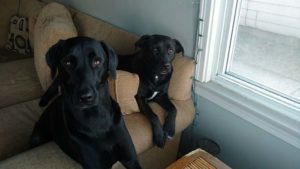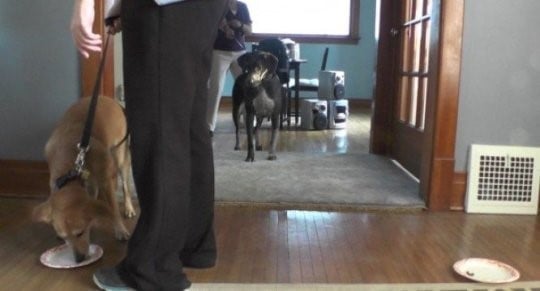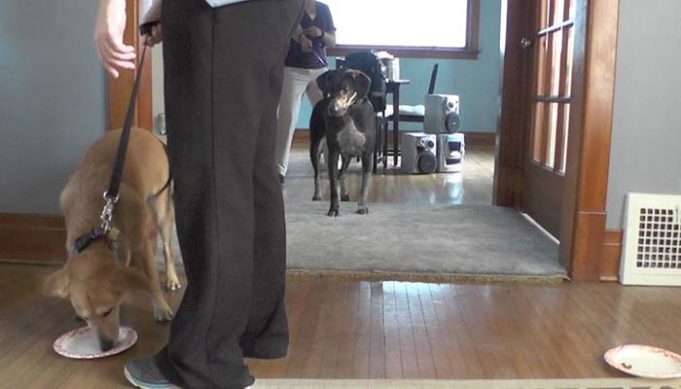More to the proof of dog's intelligence, a study shows how social dynamics of dogs who know one another influences how they behave, respond, and learn.
Have you ever wondered if it's possible that one of your dogs at home keeps influencing the other, and how competitive your household pets can be among each other?
It turns out that not only do dogs influence each other, but their relationship is the deciding factor on how much one dog is likely to follow the other. Moreover, dogs with more competitive personalities tend to think for themselves and act independently while dogs with less rivalry in their personality will blindly follow others, dogs or humans.
This new research has found the first proof to the importance of social dynamics among dogs, and shown how dogs interact with others. This plays a significant role in how they learn from one another, and how they respond to situations which require fast thinking.

Researchers at Canisius College in Buffalo, N.Y. found that dogs who live in the same household form relationships which may influence each other’s behavior.
Dogs who got along tended to follow one another, while those who showed aggression toward other canine members of the household were less likely to do so.
The results of the study were published in the latest issue of Animal Cognition journal.
The Study
This study involved an unusual approach – it used real life circumstances. Instead of testing the dogs in a lab, researchers Prof. Christy Hoffman, PhD, and Prof. Malini Suchak, PhD instead went into the homes of 37 multi-dog households.
Hoffman and Suchak, both assistant professors of Animal Behavior, Ecology and Conservation, said it was important to study the relationships between familiar dogs in their natural setting rather than use an artificially designed setting in a lab.
Each owner was asked to fill out a survey called the Canine Behavioral Assessment and Research Questionnaire (or C-BARQ). This survey is designed to provide standardized evaluations of canine temperament and behavior to dog owners and professionals.
As can be expected, dogs low in rivalry did not tend to display aggression toward other dogs. Dogs high in rivalry did display more aggression toward other dogs around valuable resources. This trend suggests a more competitive nature in dogs.

Here's what the two scientists did:
After the owners completed the C-BARQ, dogs were given an easy task. It started with researchers placing two plates of food in front of both dogs.
One dog was allowed to go up to the plate first and eat, and then was walked out of the room. The second dog then had a choice: follow the first dog’s actions, which would lead him or her to an empty plate, or not follow the actions of the first dog, in order to arrive at the plate full of food.
Dogs exhibiting low rivalry tendencies tended to just follow the first dog, even though it brought them to the empty plate and no food.
The surprising part of this finding was that the low rivalry dogs only blindly followed their canine friend if the choice was given to them immediately. If they had to wait any longer than 5 seconds, all dogs chose the full plate.
Watch the video below where a researcher explains the whole process:
What This Means for Dog Owners
In the most basic sense, this study suggests that low rivalry dogs spend their time blindly following their housemates. But given a little time to think for themselves, they gained some independence, and thought for themselves.
So how does this relate to how dogs interact with their human companions? The researchers had the answer: pretty much the same way.
When humans removed the food from one plate and then gave the dogs the choice, low rivalry dogs still followed the human demonstrator out. Again, they only did this when there was no delay or time to think.
Hoffman thinks this may have a lot to do with the personalities of low rivalry dogs. Therefore, competitiveness may be a trait which extends beyond a dog’s relationships with other dogs.
This may be observed in dogs who exhibit aggression toward their owners when the owners attempt to take away a prized possession, such as a toy or the notorious rawhide.
So if you have a high rivalry dog, it means that your dog is more likely to think for himself and less likely to blindly follow anyone else in your household.
The findings of this study demonstrate that not all dogs think and act the same (contrary to popular opinion). There is, in fact, a variation between dogs who think for themselves and those who blindly follow, and this can be determined from the way each dog interacts with others.
Reference:
- Christy L. Hoffman, Malini Suchak. Dog rivalry impacts following behavior in a decision-making task involving food. Animal Cognition, 2017; DOI: 10.1007/s10071-017-1091-9
READ NEXT: Scientists Say Dogs Know What Humans Know from Our Gaze













